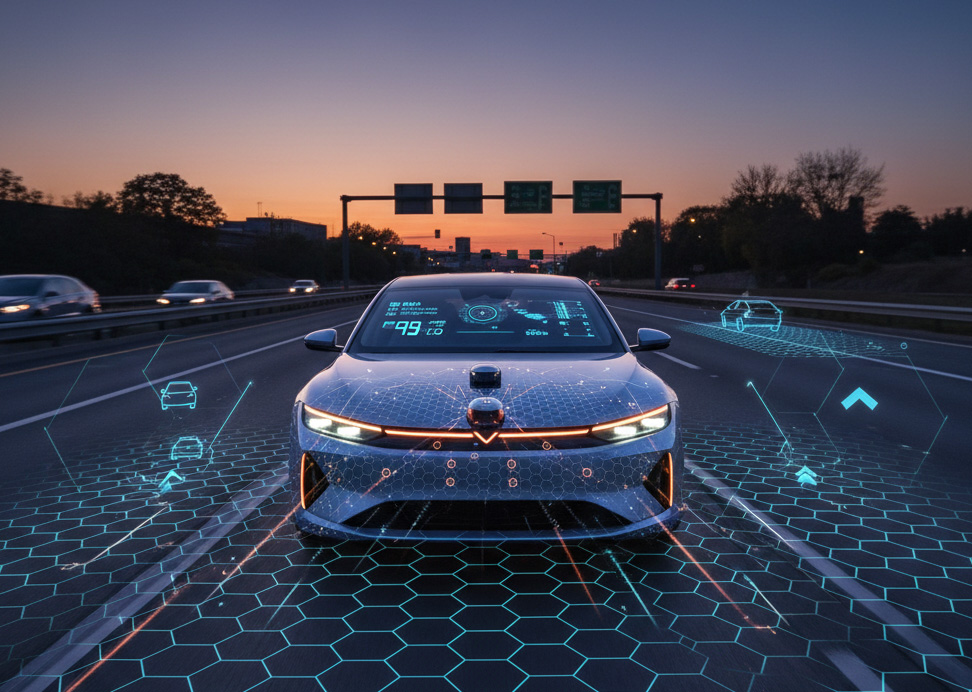Modern vehicles are smarter and safer than ever before—and your windshield plays a bigger role in that than you might think. What used to be just a barrier against wind and debris is now a hub for advanced technology that helps prevent accidents and protect lives. At the heart of this evolution is ADAS, or Advanced Driver Assistance Systems.
If your windshield is replaced, recalibrating these systems isn’t optional—it’s essential. Let’s explore why windshield calibration matters, how it works, and what you need to know before choosing a repair shop.
What Is ADAS and How Does It Work?
ADAS stands for Advanced Driver Assistance Systems, a suite of technologies designed to enhance vehicle safety and driving comfort. These systems rely on a network of sensors, cameras, and radar units—many of which are mounted directly behind or near your windshield.
Common ADAS features include:
- Lane Departure Warning (LDW) – Alerts you if you drift out of your lane.
- Lane Keep Assist (LKA) – Gently steers you back into your lane.
- Forward Collision Warning (FCW) – Warns of a potential collision ahead.
- Automatic Emergency Braking (AEB) – Brakes automatically to prevent or lessen impact.
- Adaptive Cruise Control (ACC) – Maintains a safe distance from the car ahead.
- Traffic Sign Recognition (TSR) – Reads and displays road signs on your dash.
All of these systems depend on precise camera alignment to function properly. Even a tiny shift in the position or angle of your windshield can throw off their accuracy.
Why Windshield Calibration Is Critical After Replacement
When your windshield is replaced, the camera that powers your ADAS features must be recalibrated to ensure it’s properly aligned with your vehicle’s geometry. Without calibration, your ADAS sensors may misread road conditions or fail to respond at critical moments.
Here’s why calibration matters:
- Accuracy and Reliability: A misaligned camera can cause your lane-keeping or collision-avoidance systems to respond late—or not at all.
- Safety Assurance: Proper calibration ensures that safety features work as intended, protecting you, your passengers, and others on the road.
- Insurance and Legal Compliance: Many insurers and manufacturers now require recalibration as part of windshield replacement to maintain coverage and warranty compliance.
In short, a windshield replacement isn’t complete until calibration is done.
Types of Windshield Calibration
There are generally two methods of ADAS calibration:
- Static Calibration:
Performed in a controlled environment using specialized tools and targets placed at specific distances. The vehicle remains stationary during this process. - Dynamic Calibration:
Requires the technician to drive the vehicle under specific conditions so the system can self-adjust using real-world data.
Some vehicles require both methods, depending on the make, model, and ADAS system design. This is why it’s so important to go to a certified shop familiar with your vehicle’s specifications.
How to Find a Trustworthy Shop
Not every auto glass shop is equipped to handle ADAS recalibration. When comparing providers, look for:
- ADAS Certification and Training: The shop should have technicians trained in your vehicle’s specific systems.
- Proper Equipment: Advanced calibration tools and software are required for accurate alignment.
- OEM-Quality Glass: Using factory-grade glass ensures proper sensor placement and clarity for cameras.
- Transparency: A reputable shop will clearly explain whether your vehicle needs recalibration and include it in the service.
The Importance of Choosing the Right Service
Choosing the right shop isn’t just about price—it’s about safety. Failing to recalibrate your ADAS could leave you driving with a false sense of security.
That’s why Glass.net makes it easy to compare local shops that can be trusted with your windshield replacement.
Use our free quote tool to compare up to three trusted shops near you and make sure your vehicle is safe for you and the road.
In Summary:
ADAS systems are one of the biggest advancements in vehicle safety, but their effectiveness depends heavily on proper windshield calibration. If your vehicle has forward-facing cameras or sensors, don’t skip recalibration after a windshield replacement—it’s not just about visibility, it’s about safety.

To read more, visit blog.glass.net

